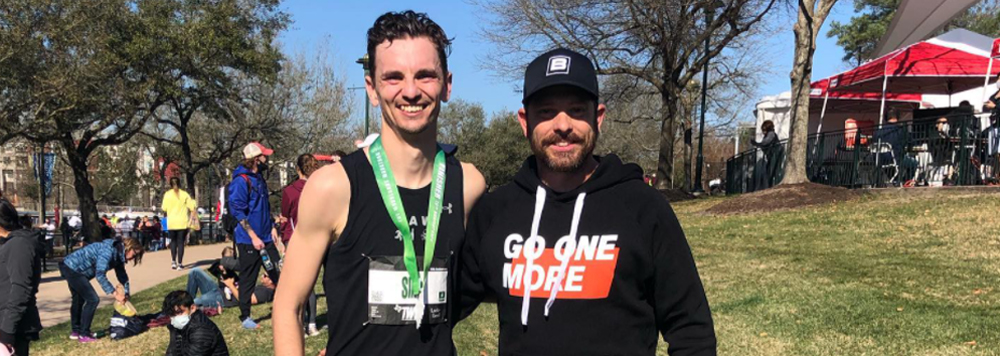In the sports section of any bookstore there are shelves of books on running—many of them quite good. Most of them deal with basic training and injury prevention techniques. But every so often, a really special book about running comes along, separating itself from others by taking a deeper dive.
Such is the case with Alex Hutchinson’s Endure. We all know that there is a mental aspect of running. Hutchinson, a former 3:42 1,500-meter runner, takes a much closer look, writing about how our physiology interacts with our psychology. The result is a fascinating book, full of compelling stories that illustrate what it truly means to “endure.” It’s a must-read for all serious runners.
“Achievement is not possible without discomfort,” renowned essayist Malcom Gladwell tells us in his introduction. “So, what is our relationship to that pain? How do the signals of protest from our brain interact with the physical will to keep moving?” he asks.
This is cool stuff, a part of our running psyche that we all think about. But here’s where Endure really shines. Hutchinson looks way beyond the simple data we glean from our weekly workouts—how fast we recovered from a hill workout, what did we gain from the interval session—all of that data is useful, but there are many things your Garmin can’t tell you.
Hutchinson, a former columnist for Runner’s World and a current contributor to Outside magazine, delves into what “perceived effort” really means. As a Canadian collegiate runner in the mid-90s, Hutchinson was a middle-distance runner. He tells a fascinating story about how he strived and ultimately succeeded in breaking four minutes in the 1,500 (or as he calls it, the “poor-man’s 4-minute mile).
As Hutchinson tells us, he ran 4:02 as a high school runner, but as a collegiate runner, despite his sub-4 goal, he plateaued at 4:01. For four straight years, he ran 4:01-4:02.
But then, during a relatively insignificant race, a big breakthrough occurred.
“In terms of the idea of pushing physical limits, I felt like I was approaching the borders of what my body was capable of. I thought I could run 3:59, but I figured there wouldn’t be much beyond that,” he says.
The race was 1,500-meters on an indoor track, so 200-meters per lap. Now here’s where it gets interesting. Hutchinson says he ran through the first lap, and heard the timekeeper call out “27 seconds”—way, way faster than he needed to break four minutes.
“My response was somewhere between panic and confusion,” Hutchinson says. “Because I actually felt better than I would have expected at 27 seconds.”
Hutchinson relates how he passed through the second lap and heard 57 seconds, still way too fast, but that he still felt surprisingly good. When the same thing happened after the third lap, he realized something amazing was happening, and decided to stop calculating, and just put his head down and run.
The result was, he crossed the finish line in 3:52.4, a nine-second personal best after four years of being stuck in the same place. But here’s the really interesting thing. One of his teammates who had been on the side-lines had been taking Hutchinson’s splits so he could put them in his training log. Talking to his friend, Hutchinson marveled at how fast he had gone out. But the teammate showed him the splits. Turns out the first one was 30 seconds, and the second one was 60. Apparently, the timekeeper during the actual race had given Hutchinson the wrong splits.
“He basically fooled me into thinking I was having the greatest race of my life,” says Hutchinson. “And so, I did. And that really altered my understanding of what it means to be pushing to your limits.”
Hutchinson goes on to say that he never struggled to break four minutes in the 1,500 after that (he eventually ran a 3:42).
That race led Hutchinson on a journalistic path of writing about science and sport. The fundamental question he was interested in was, “What defines our limits? When you are pushing as hard as you can, what is the variable that we’re talking about that is ‘maxed out’?”
Ultimately, Hutchinson concludes that—in most cases—when we think about physical limits, when we feel like we are experiencing physical limits, that reflects something that’s going on in our brains, not in our muscles or hearts.
Stop by Ready to Run today for all your running gear!
Monday – Thursday: 10AM – 6PM | Friday: 10AM – 5PM | Saturday: 9AM – 5PM | Sunday: 12PM – 5PM





